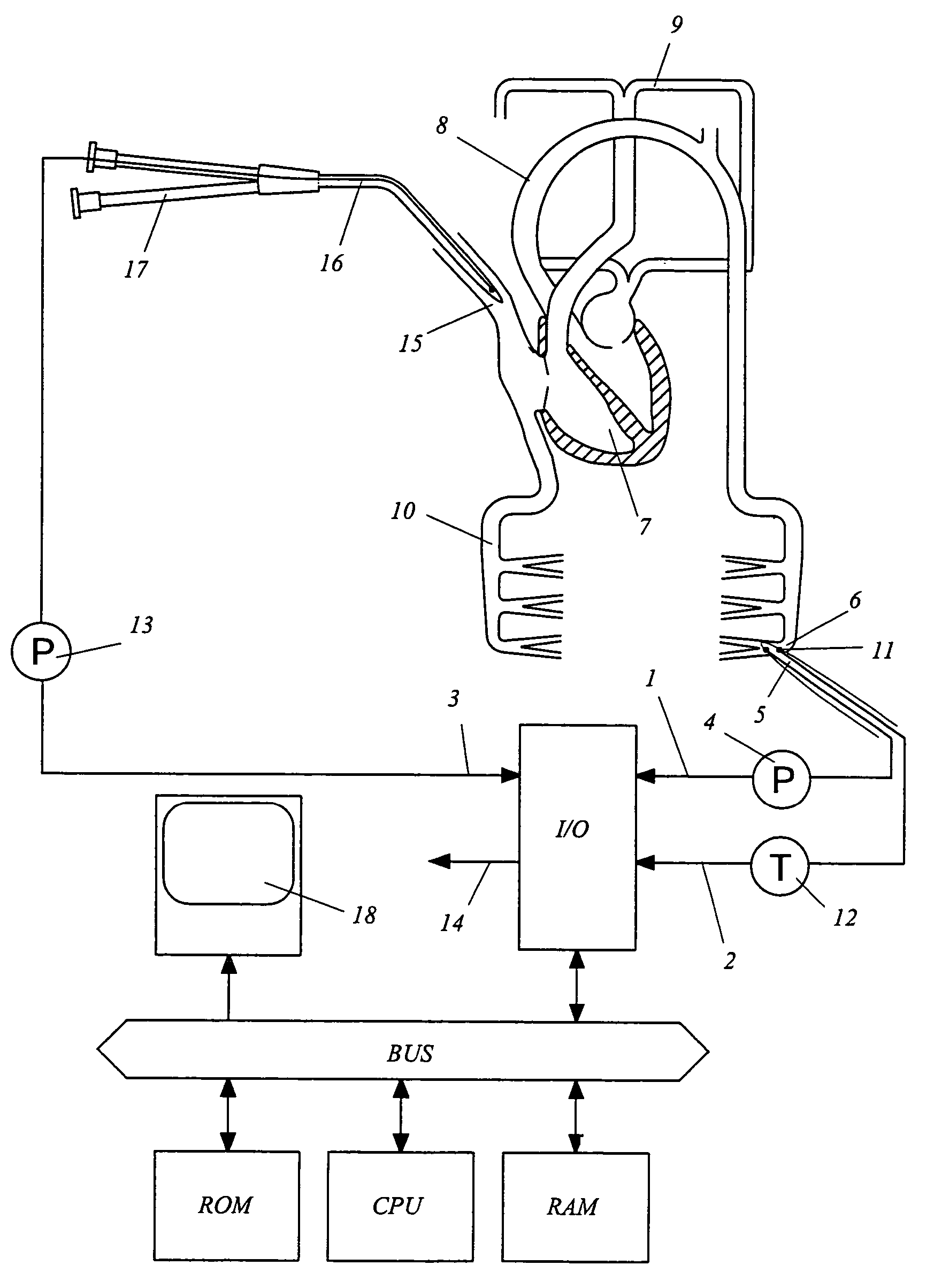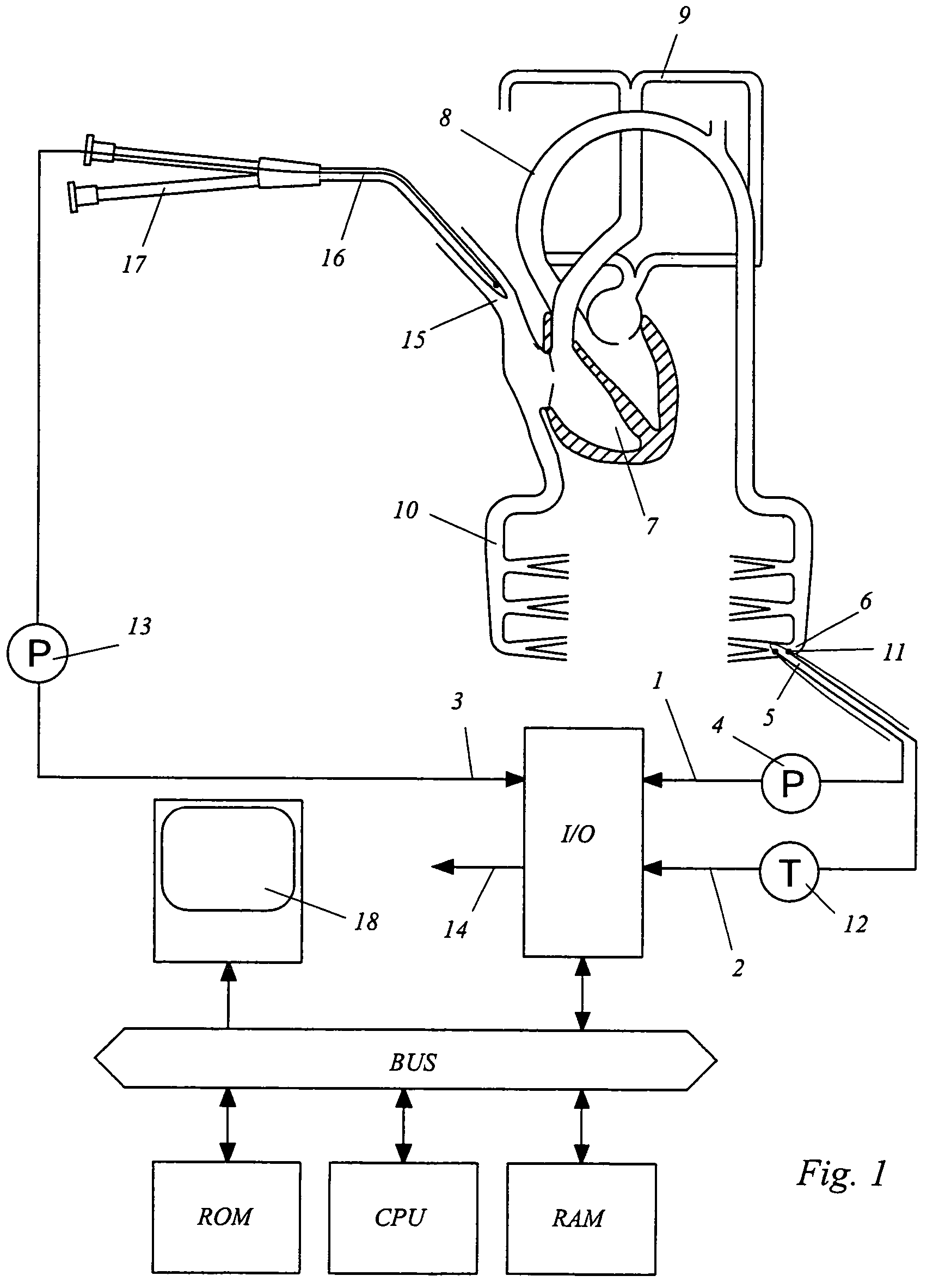Device for determining a hemodynamic parameter
a hemodynamic parameter and device technology, applied in the field of devices for determining the hemodynamic parameter of patients, can solve the problems of reducing the availability of increasing the stress of the patient being monitored, and reducing the availability of that personnel for other tasks, so as to improve the accuracy of stroke volume determination and improve the determination of the transition between systole and diastole.
- Summary
- Abstract
- Description
- Claims
- Application Information
AI Technical Summary
Problems solved by technology
Method used
Image
Examples
Embodiment Construction
[0044]The device from FIG. 1 has an input / output sub-system (I / O) with three input channels 1, 2, 3.
[0045]A pressure signal that corresponds at least approximately to the aorta pressure of the patient is continuously read in by way of the first input channel 1. This can be an analog sensor signal, which is digitalized by means of an analog / digital converter, or a digital signal is already read in from an external pressure measurement transformer 4.
[0046]In practice, an arterial pressure that is measured, preferably as close to the aorta as possible, by way of an arterial catheter 5, serves as a pressure that approximately corresponds to the aorta pressure. A leg artery 6 can serve as the measurement site, as is indicated in the outlined segment of the vascular system with heart 7, aorta arch 8, pulmonary circulatory system 9, and body circulatory system 10.
[0047]The arterial catheter 5 furthermore contains a temperature sensor 11, which can be used for a thermo-dilution measurement ...
PUM
 Login to View More
Login to View More Abstract
Description
Claims
Application Information
 Login to View More
Login to View More - R&D
- Intellectual Property
- Life Sciences
- Materials
- Tech Scout
- Unparalleled Data Quality
- Higher Quality Content
- 60% Fewer Hallucinations
Browse by: Latest US Patents, China's latest patents, Technical Efficacy Thesaurus, Application Domain, Technology Topic, Popular Technical Reports.
© 2025 PatSnap. All rights reserved.Legal|Privacy policy|Modern Slavery Act Transparency Statement|Sitemap|About US| Contact US: help@patsnap.com



